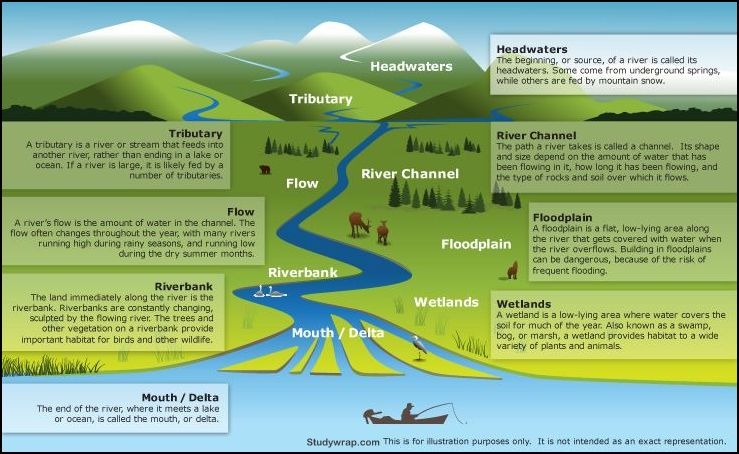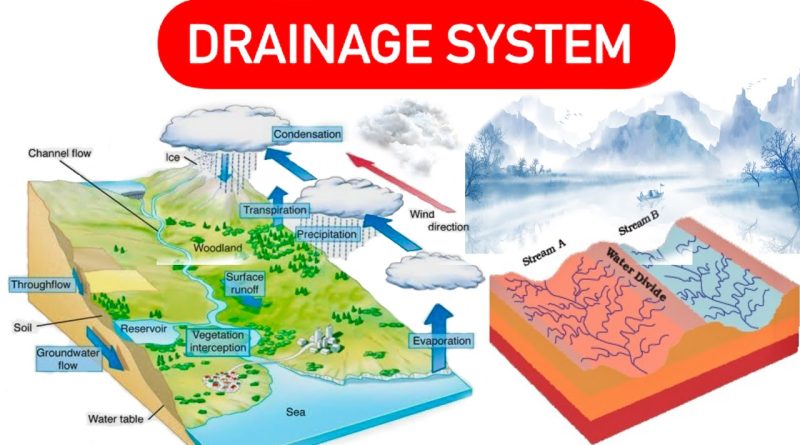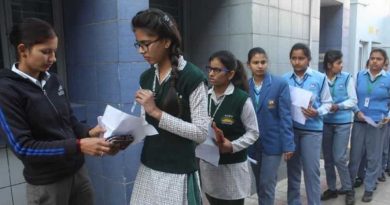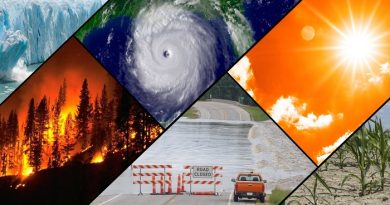World Geography : Drainage Patterns and System . ( UPSC )
Flow of water through well defined channel is called drainage.
- The area drained by a main river and its tributaries, the entire area from where water collects in the main river is called catchment area.
- The imaginary line that separates one drainage basin from another is called a watershed.
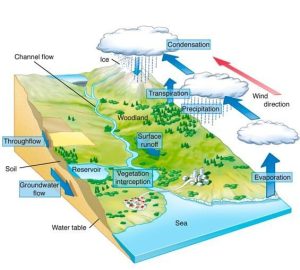
Drainage Pattern
- Drainage pattern a pattern created by stream erosion over time.
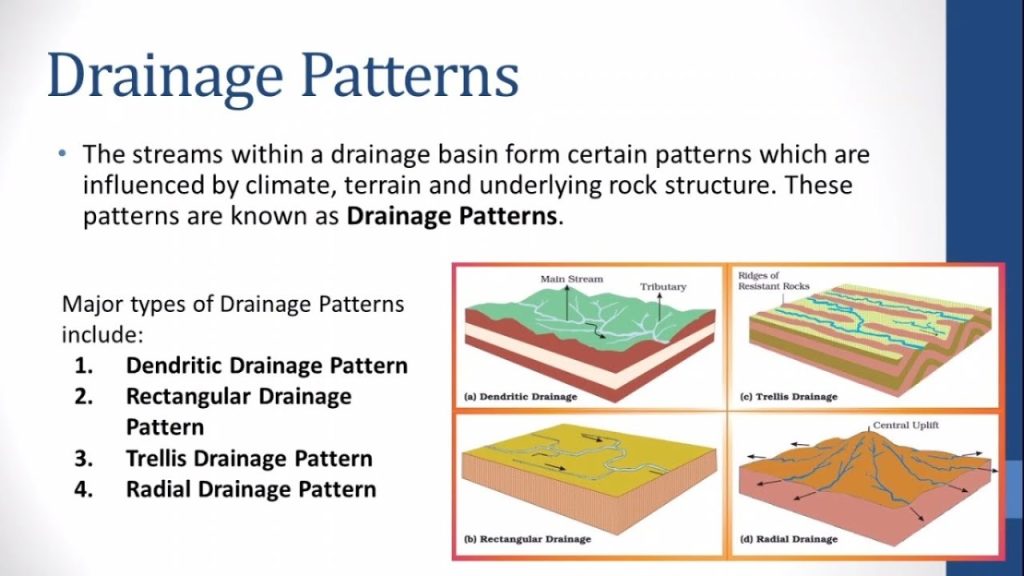
1. Dentritic
- There is a main stream from which all the tributaries come together.
2. Pinnate
- Like a bird’s wing or a bird’s veins.
- Son river and Narmada runoff.
3. Trellis
- Tributaries meet at right angles to the main river in the rift valley.
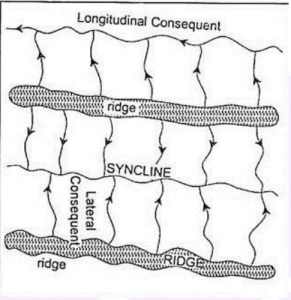
4. Rectangular
- In this also the tributaries meet at right angles to the main river, but the angle of joining it depends on the joints of the rocks.
5. Radial/ Centrifugal
- In this type of pattern, the rivers flow from one place and flow around.
- Ranchi Plateau, Hazaribagh Plateau, Amarkantak Plateau.
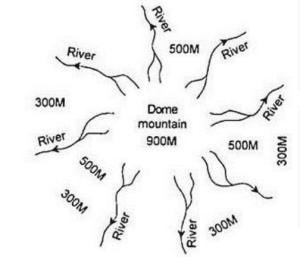
6. Centripetal
- In this type of pattern, rivers start falling in a trough or lake.
7. Annular
- In such a pattern, it flows in the shape of a circle revolving around the dome.
8. Barbed
- If the direction of the tributaries is opposite to the direction of the main river.
- Several tributaries in the upper reaches of the Indus and Brahmaputra
9. Herring’s Bone Drainage Model
- This pattern is formed in mountain ranges.
- Ex-Jhelum River.
10. Parallel Drainage Pattern
- Rivers of the Western and Eastern Coastal Plains.
11. Intermittent
- In the desert parts, the seasonal water current disappears midway instead of meeting the sea.
- The river also becomes extinct for some time in Bhabar region.
12. Underground Drainage Pattern
- The surface water level goes underground in the lime rock area
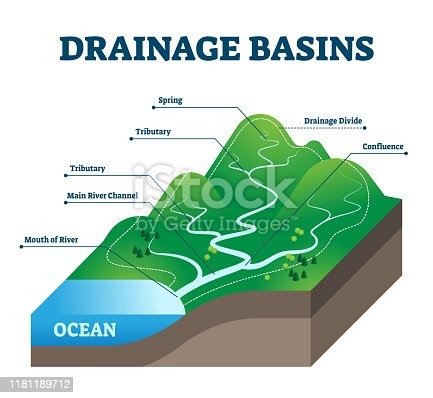
Drainage System
- Patterns formed by the streams, rivers, and lakes in a particular drainage basin.
- The following two types:
A. Sequential/ concordant drainage system
- It flows along the slopes.
- They are of the following types:
1- Consequent
- Rivers arising after uplift of topography.
- Follow the territorial slope.
- Rivers flowing in the peninsular plateau like Narmada, Tapti, Godavari, Krishna and Kaveri.
2- Subsequent
- Joins the following river at right angles.
- The Chambal, Sind, Ken, Betwa, Tons and Son meet the Yamuna and the Ganga at right angles.
3- Obsequent
- River flowing in the opposite direction of the main follower river.
- Meets the subsequent river at right angles.
4- Resequent
- Their direction is according to the flow direction of the main consequent river.
- Flows along the regional slope.
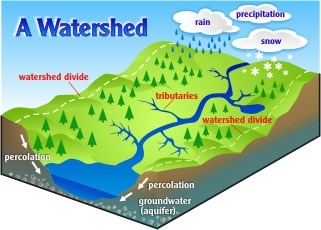
B. Insequent drainage system
- It flows in the opposite direction of the slope.
- They are of the following types:
1. Antecedent / Discordant River
- Their origin occurs before the uplift of the site block.
- Himalayan rivers like Ganga, Brahmaputra, Indus.
- It flows independently of the slope.
2. Superimposed
- When a river flowing over a softer rock stratum reaches the harder basal rocks but continues to follow the initial slope.
- It seems to have no relation with the harder rock bed.
- The Damodar, the Subarnarekha, the Chambal, the Banas and the rivers flowing at the Rewa Plateau present some good examples of superimposed drainage.
